News & Announcements
- Details
- Written by Joshua Wachtel
Last week I posted a link to a new report issued by the Civil Rights Project at University of California, Los Angeles, ”Out of School & Off Track: The Overuse of Suspensions in American Middle and High Schools.” Below, you'll find a 10-minute video from Huffington Post with co-author of the report Daniel Losen, Director of the Center for Civil Rights Remedies.
Losen discusses the report and the fact that suspensions for minority students have been on the rise over the past three decades. He notes that suspensions are "not a good way to address typical adolescent behavior," though as many as 25% of certain group of students got suspended in 2009-10 in some schools.
- Details
- Written by Joshua Wachtel
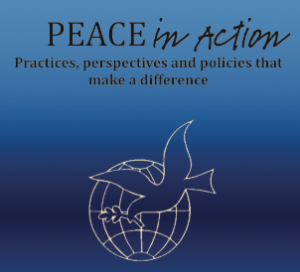 Terry O'Connell has a chapter, called "Conflict and Relationships: Restorative Ways of Building Community," in a new book titled Peace in Action: Practices, Policies and Perspectives That Make a Difference, edited by Raymond John R. King, Victor MacGill, Roger Wescombe. The book is a collection of papers from the Rotary Peace Communities International Conference held in Wagga Wagga, New South Wales, Australia, in 2012. Terry is director of Real Justice Australia, and he developed the Real Justice script and the restorative questions. I've posted three excerpts here, including the introduction and two anecdotes taken from Terry's influence on people adopting restorative practices for use in the business world.
Terry O'Connell has a chapter, called "Conflict and Relationships: Restorative Ways of Building Community," in a new book titled Peace in Action: Practices, Policies and Perspectives That Make a Difference, edited by Raymond John R. King, Victor MacGill, Roger Wescombe. The book is a collection of papers from the Rotary Peace Communities International Conference held in Wagga Wagga, New South Wales, Australia, in 2012. Terry is director of Real Justice Australia, and he developed the Real Justice script and the restorative questions. I've posted three excerpts here, including the introduction and two anecdotes taken from Terry's influence on people adopting restorative practices for use in the business world.
Introduction
Recently I ran a restorative session for about 120 Year five students (aged 10-11) in a primary school. The initial discussion focused on their relationships with one another and their families. Most said that friendships were the most important part of their school experience. I posed the question ‘If today was the last day of your primary schooling and as you looked back you discovered that in all the years you were together as a group, you had never had a conflict, a fight or disagreement, what would that be like?’
- Details
- Written by Joshua Wachtel
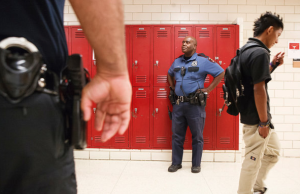 Photo by Michael Stravato for the New York TimesPhiladelphia youth activists explain and critique the school-to-prison pipeline in On Blast, a seven-minute podcast. Their description of the recording states:
Photo by Michael Stravato for the New York TimesPhiladelphia youth activists explain and critique the school-to-prison pipeline in On Blast, a seven-minute podcast. Their description of the recording states:
The School-to-Prison Pipeline is a disturbing national trend wherein children are funneled out of public schools and into the juvenile and criminal justice systems. Members of the Philadelphia Student Union created the Campaign for Nonviolent Schools (CNS) to work towards improving school climates and ending the School-to-Prison Pipeline.
On Blast youth radio producer, Julian Roessler, explains a youth perspective on the School-to-Prison Pipeline. Julian interviews Josh Glenn, an organizer with YASP (Youth Art & Self-Empowerment Project) and Decarcerate PA. Josh is also a member of CNS. Together, they explore the deeper roots of the School-to-Prison Pipeline.
Listen to the podcast here.
- Details
- Written by Joshua Wachtel
 Photo by Black Rock Solar, Flickr Creative CommonsIn a new report issued by the Civil Rights Project at University of California, Los Angeles,"Out of School & Off Track: The Overuse of Suspensions in American Middle and High Schools," Daniel J. Losen and Tia Elena Martinez analyze data from over 26,000 U.S. middle and high schools. In their executive summary, they write:
Photo by Black Rock Solar, Flickr Creative CommonsIn a new report issued by the Civil Rights Project at University of California, Los Angeles,"Out of School & Off Track: The Overuse of Suspensions in American Middle and High Schools," Daniel J. Losen and Tia Elena Martinez analyze data from over 26,000 U.S. middle and high schools. In their executive summary, they write:
[W]e estimate that well over two million students were suspended during the 2009-2010 academic year. This means that one out of every nine secondary school students was suspended at least once during that year. As other studies demonstrate, the vast majority of suspensions are for minor infractions of school rules, such as disrupting class, tardiness, and dress code violations, rather than for serious violent or criminal behavior. Serious incidents are rare and result in expulsions, which are not covered by this report.
- Details
- Written by Joshua Wachtel
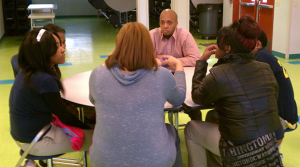 Talking circle / photo by Christianity Today
Talking circle / photo by Christianity Today
Here's an excerpt from an excellent article that appeared this week in Christianity Today. "Detroit Students Restore Peace by Talking It Out" by Charles Honey begins with an anecdote of a restorative circle used to resolve an argument that led to threats, which took place one weekend between a group of teenaged girls over social media. The article then goes on to quote Henry McClendon, Michigan Regional Coordinator for the IIRP, who talks about his desire to see successful school-based restorative practices programs expand out to surrounding neighborhoods.
"It's my personal mission to see Detroit become the first large, urban restorative city," says Henry McClendon, a Christian minister and executive of the Skillman Foundation, a private nonprofit focused on improving schools and neighborhoods for children. He has spearheaded implementing restorative practices in schools and among law enforcement and community groups.
- Details
- Written by Joshua Wachtel
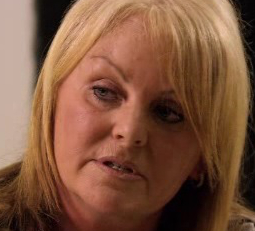 The UK Restorative Justice Council (RJC) featured the following news in a recent email:
The UK Restorative Justice Council (RJC) featured the following news in a recent email:
In 2009, Clare Topcu and her nine year old son were the victims of a robbery, which had a devastating effect on their lives.
Two men broke into their house while they slept, and Clare was knocked unconscious. She came round to find herself bound with packing tape, and her son being held at knife-point. When Clare’s husband returned home, the burglars fled with £9,000, leaving Clare and her son terrified and badly beaten.
- Details
- Written by Joshua Wachtel
 Photo by Jim Wilson at the New York Times
Photo by Jim Wilson at the New York Times
A second article this week, about a restorative justice program in schools in Oakland, California, has appeared in a national publication, this one in the New York Times. In a piece titled, "Opening up, students transform a vicious circle," Patricia Lee Brown writes, "The approach now taking root in 21 Oakland schools, and in Chicago, Denver and Portland, Ore., tries to nip problems and violence in the bud by forging closer, franker relationships among students, teachers and administrators." The entire piece may be found here.
IIRP President Ted Wachtel has responded to the piece in his blog column at the Huffington Post, advocating "Restorative justice practices in every classroom." He writes, "I was delighted to see another New York Times article about restorative justice. ... Just across the Bay, schools in San Francisco, as well as in Detroit, Baltimore, Philadelphia, New York and hundreds of other urban, suburban and rural communities, are adopting an approach that puts restorative practices in every classroom in the building." Read the entire piece here.
- Details
- Written by Joshua Wachtel
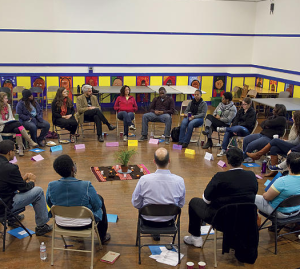 Photo by Ann Hermes at Christian Science MonitorStacy Teicher Khadaroo has an article in this month's Christian Science Monitor titled "Restorative justice: One high school's path to reducing suspensions by half." As so many articles do, this one begins with a story. I particularly like the way Eric Butler, the school's restorative justice coordinator, apologizes to the student who thinks she is about to get in trouble!
Photo by Ann Hermes at Christian Science MonitorStacy Teicher Khadaroo has an article in this month's Christian Science Monitor titled "Restorative justice: One high school's path to reducing suspensions by half." As so many articles do, this one begins with a story. I particularly like the way Eric Butler, the school's restorative justice coordinator, apologizes to the student who thinks she is about to get in trouble!
In the open-air corridor just outside his classroom, Eric Butler could hear snatches of escalating conflict: two girls talking trash about Mercedes Morgan – calling her the B-word and, even worse, a liar.
He saw Mercedes standing apart, pretending not to hear. He called the senior into his room. She was reluctant, resisting his first attempt to find out what was going on. So he started over and introduced himself, made her laugh, asked about her life. He didn't dress or talk like a typical teacher, and he lived nearby in the 'hood.
- Details
- Written by Joshua Wachtel
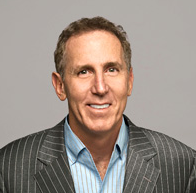 Tony Schwartz of the Energy Project The following is a powerful excerpt from a blog post by Tony Schwartz, president and CEO of The Energy Project, at Harvard Business Review's blog network. It provides a great example of how what we would call "restorative circles," both proactive and responsive, can be used successfully to build social capital in a corporate business setting:
Tony Schwartz of the Energy Project The following is a powerful excerpt from a blog post by Tony Schwartz, president and CEO of The Energy Project, at Harvard Business Review's blog network. It provides a great example of how what we would call "restorative circles," both proactive and responsive, can be used successfully to build social capital in a corporate business setting:
For two years now, we have been holding regular "community" meetings at our office to give team members an opportunity to check in about how they're doing, not just professionally but also personally. Each person answers several questions beginning with a deceptively simple one: "How are you feeling today?"* The rest of us simply listen.
It was only when we faced a sudden crisis that I finally understood why these meetings had been so important. On a weekend last October, the 23-year-old son of one of our team members died unexpectedly and tragically. On Monday morning, I called our team together in our conference room.
- Details
- Written by Sharon Mast
This article aims to show how one nonprofit agency in Pennsylvania, USA, integrated restorative principles and processes into an early education and parenting initiative. This resulted in positive social, emotional and cognitive outcomes for young children and gave them a great foundation for success in school and in life. It also provided an opportunity for the agency’s staff to strengthen their knowledge and understanding of restorative concepts and practices, enabling them to engage more effectively as restorative leaders.

Restorative Works Year in Review 2024 (PDF)
All our donors are acknowledged annually in Restorative Works.
